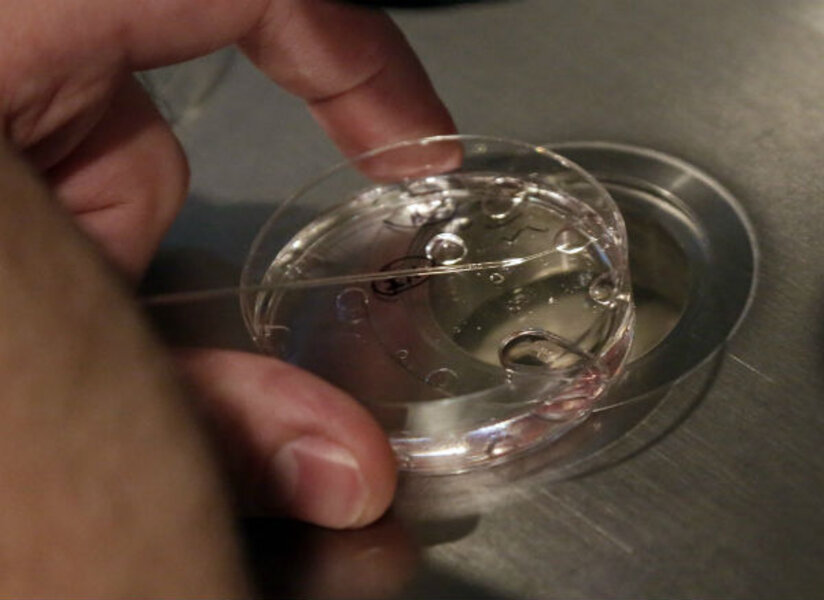CDC Report: Donated egg pregnancies on rise in US
Loading...
| Chicago
US women are increasingly using donated eggs to get pregnant, with often good results, although the ideal outcome – a single baby born on time at a healthy weight – is still uncommon, a study found.
That ideal result occurred in about 1 out of 4 donor egg pregnancies in 2010, up from 19 percent a decade earlier, the study found.
Almost 56 percent resulted in a live birth in 2010, and though most of these were generally healthy babies, 37 percent were twins and many were born prematurely, at low birth weights. Less than 1 percent were triplets. Low birth weights are less than about 5½ pounds and babies born that small are at risk for complications.
For women who use in vitro fertilization and their own eggs, the live-birth rate varies by age and is highest – about 40 percent – among women younger than 35.
Women who use IVF with donor eggs are usually older and don't have viable eggs of their own. Because the donor eggs are from young, healthy women, they have a good chance of success, generally regardless of the recipient's age.
The average age of women using donor eggs was 41 in 2010 and donors were aged 28 on average; those didn't change over 10 years.
The study, by researchers at Emory University and the federal Centers for Disease Control and Prevention, was published online Thursday in the Journal of the American Medical Association and presented at the American Society for Reproductive Medicine's annual meeting in Boston.
IVF involves mixing eggs and sperm in a lab dish and transferring the resulting embryo to the woman's womb a few days later. It's most often used with the woman's own eggs, in cases of infertility.
The study found attempts using donor eggs increased over the decade from 10,801 to 18,306. Transferring just one embryo, to avoid multiple births, also increased, from less than 1 percent to 15 percent in 2010.
Lead author Dr. Jennifer Kawwass of Emory University said researchers still need to find better ways to identify which embryos have the best chance of resulting in healthy babies.
Dr. William Schlaff, Ob-Gyn chief at Thomas Jefferson University in Philadelphia, said the rise in use of donor eggs "is probably partly a social story. Women not having success in becoming pregnant in their late 30s and 40s are more comfortable using donor eggs" and techniques have improved to raise success rates, Schlaff said. He was not involved in the research.







